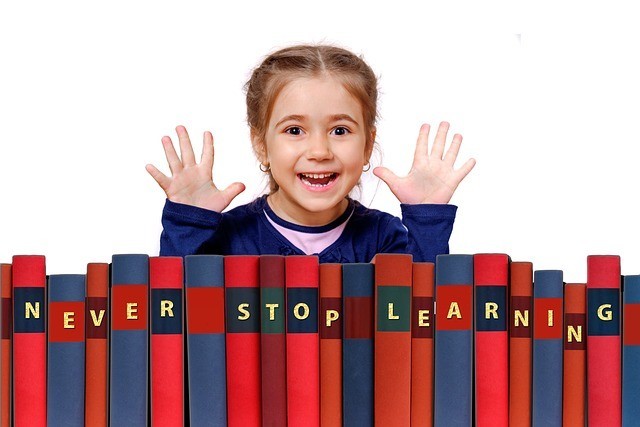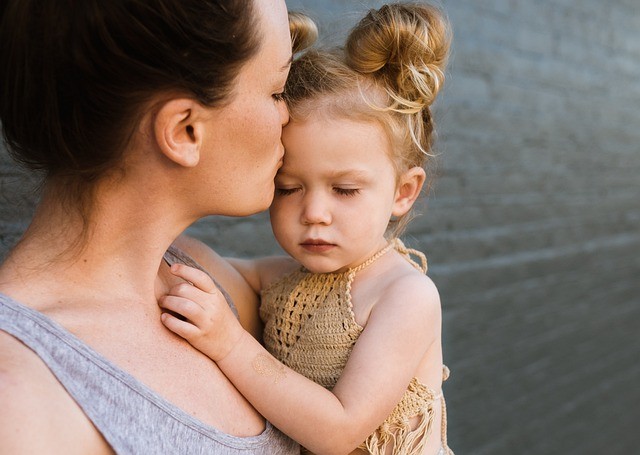The transition from home to preschool is a significant milestone in your child’s life. It marks the beginning of their educational journey, fostering independence, social skills, and cognitive development.
However, this transition can also be overwhelming for both children and parents alike. As a parent, you play a crucial role in ensuring that this transition is smooth and positive for your little one.
In this article, we will explore various strategies and tips to help you navigate this exciting journey of transitioning your child to preschool. From establishing routines to fostering open communication with teachers to helping to manage separation anxiety, we will provide you with valuable insights that will empower you as a parent during this crucial phase and help your child to manage this major life change.
The Importance of Preparing Children For Preschool
Helping children transition from home to preschool is important for several reasons:
- Socialisation: Preschool provides an opportunity for children to interact with their peers and develop social skills. By transitioning from home to preschool, children learn how to share, take turns, cooperate, and make friends.
- Independence: Preschool encourages independence and self-help skills. Children learn how to do things on their own, such as dressing themselves, using the bathroom independently, and following routines. This helps them gain confidence in their abilities.
- Cognitive development: Preschool exposes children to a structured learning environment where they can engage in various educational activities that promote cognitive development. They are introduced to early literacy and numeracy concepts through play-based learning.
- Emotional well-being: Transitioning from home to preschool can help children develop emotional resilience by learning how to cope with separation anxiety or other emotions that may arise during the transition process. It also provides them with a sense of routine and stability.
- Preparation for school: Attending preschool prepares children for the formal education system by introducing them to classroom settings, following instructions from teachers, participating in group activities, and developing essential skills like listening and concentration.
By helping children transition smoothly from home to preschool, you are setting a strong foundation for their overall growth and development while fostering a love for learning at an early age.
Tips For a Smooth Transition to Preschool
Watching your child go off to preschool for the first time can be heart-breaking for many parents. On the one hand, you want them to go and make friends, learn new skills, and succeed. But on the other, you’re so used to having them at home with you!
This transition is possibly the first major change your child will have to deal with in their lives, so it’s important to put your own worries aside and focus on helping them to deal with the situation with less stress. That way, it will go smoothly for both of you and the transition will be a calmer affair.
Let’s look at some ways you can ensure a smoother transition from home to preschool.
Familiarising Your Child With The Preschool Environment
Familiarising your child with their preschool environment is an important step in helping them feel comfortable and confident. Here are some helpful tips to make the process easier:
- Visit the preschool beforehand: Take your child for a visit to the preschool before their first day. Show them around, introduce them to the teachers, and let them explore the classrooms and play areas.
- Read books about preschool: There are many children’s books available that talk about starting preschool. Reading these books together can help your child understand what to expect and get excited about their new adventure.
- Talk about it positively: Discussing preschool in a positive light can help ease any anxieties your child may have. Talk about all the fun activities they will get to do, new friends they will make, and how much they will learn. Remember to tie in your visit to the preschool so they can make visual and mental connections.
Establishing a Preschool Routine at Home
Creating a preschool routine at home can be a fun and rewarding experience for both you and your child. In addition, it helps to smooth the waters of transition so it’s not such a shock to change routine on the first day of preschool.
Here are some helpful tips to get started:
- Set a Schedule: Establishing a consistent daily schedule will help your child feel secure and know what to expect each day. Create a visual timetable that includes activities such as circle time, learning time, playtime, snack time, and outdoor time.
- Learning Time: Dedicate specific periods of the day for structured learning activities such as letter recognition, counting exercises, shape identification or even basic science experiments tailored to their age group.
- Playtime: Encourage imaginative play by providing various toys and materials that promote creativity and problem-solving skills. Consider rotating toys to keep things fresh and exciting.
- Snack Time: Incorporate regular snack breaks into the routine where your child can practice independence by helping prepare simple snacks like cutting fruits or spreading peanut butter on crackers.
- Story Time: End each day with story time where you read books together or encourage them to retell stories they’ve heard during the day using puppets or props.
Practicing Self-Help Skills
Your child is going to be away from you for probably the first time in their life. That means they need to start learning self-help skills to ensure independence during their time in preschool.
Of course, their teacher will help them throughout the day, but starting to develop key skills in this area will allow them to build confidence, and make it easier for them to transition smoothly, make new friends, and gain everything they need from their preschool experience.
- Independence in dressing: Encourage your child to dress themselves, starting with simple tasks like putting on their shoes or socks. This will help them feel more confident when getting ready for preschool.
- Self-feeding: Teach your child how to use utensils and drink from a cup independently. Practice this during mealtimes at home so they can comfortably eat on their own at preschool.
- Handwashing: Show your child how to properly wash their hands using soap and water, emphasising the importance of cleanliness before meals or after using the restroom.
- Toilet training: If your child is still in the process of toilet training, work on reinforcing those skills at home so they feel comfortable using the bathroom independently at preschool.
- Following routines: Establish consistent daily routines at home that mimic what they will experience in preschool, such as having set times for meals, naps, playtime, and bedtime.
- Communication skills: Encourage your child to express their needs verbally by practicing active listening and engaging in conversations with them throughout the day.
- Sharing and taking turns: Teach your child about sharing toys and taking turns during playtime by setting up playdates or participating in group activities where they can practice these social skills.
Remember that every child develops at their own pace, so be patient and supportive throughout this process. Celebrate each small achievement along the way as you prepare them for a successful transition into preschool life.
Building Early Learning Skills
Getting a head start on what your child will be learning in more depth will help them feel more confident in preschool. Of course, the great thing about preschool is that your child is going to learn so much without even realising it, but developing a love of learning is a great foundation for the rest of their education.
- Introducing pre-academic concepts: You can do this by exploring colours, shapes, numbers, and letters. Singing songs and pointing out things around the house is a great way to do this and will help your child to become more curious about their environment, evoking their creative thinking skills.
- Fine motor skills: Engage your child in activities that strengthen their fine motor skills such as colouring with crayons, playing with playdough, stringing beads onto a necklace, or using scissors to cut paper.
- Social skills: Encourage your child’s social development by organizing playdates with other children their age before starting preschool. This will help them practice sharing, taking turns, and interacting with peers.
- Listening skills: Play listening games where you give simple instructions for your child to follow (e.g., “touch your nose,” “clap three times”). This will help develop their ability to listen attentively in a classroom setting.
- Creativity and imagination: Foster creativity through art projects at home where they can explore different materials like paints, markers, clay or even recycled items for crafting.
Communicating With Preschool Staff
Communicating effectively with preschool staff is essential for maintaining a positive and productive learning environment for children. This will also help you to feel calmer during your child’s preschool days and you’ll know that they’re looked after and cared for the entire time.
- Sharing important information about your child: It’s important to inform your child’s preschool teacher about any pertinent information related to your child. This includes allergies, health issues, strong dislikes, and behavioural issues.
- Addressing concerns and asking questions: Your child’s teacher will want to work hand in hand with you as a parent and that means you should never be worried about talking to them about any concerns you have or asking questions. That’s also what they’re there for!
- Collaborating with teachers for a smooth transition: Preschool teachers understand that transitioning from home to preschool is a huge change for children and a difficult experience for parents. They have years of experience in this, so feel free to collaborate with them to help smooth the waters of the transition.
Remember, effective communication is a two-way street. By fostering a positive and collaborative environment with the preschool staff, you can ensure that everyone feels valued and motivated to provide the best possible care and education for young children.
Managing Separation Anxiety & Providing Comfort And Reassurance
We know that transitioning from home to preschool can be a challenging time for both children and parents, and Separation anxiety is a common issue that many children experience. Here are some tips to help manage separation anxiety:
- Gradual Transition: Start by gradually introducing your child to the preschool environment before their official start date. Visit the school together, meet the teachers, and spend some time in the classroom so your child can become familiar with their new surroundings.
- Establish a Routine: Create a consistent routine at home that mimics what they will experience at preschool. This will help them feel more comfortable with the structure and predictability of their day.
- Practice Separation: Begin practicing short periods of separation at home or with trusted family members or friends so your child becomes accustomed to being away from you for short periods of time.
- Stay Calm and Confident: Children often pick up on their parents’ emotions, so it’s important for you to remain calm and confident during drop-offs. If you appear anxious or worried, it may increase your child’s anxiety as well.
- Develop Goodbye Rituals: Create special goodbye rituals such as giving them a hug, reading a book together, or singing a song before leaving them at preschool each day. These rituals can provide comfort and reassurance during transitions.
- Provide Comfort Objects: Allow your child to bring along comfort objects like stuffed animals or blankets from home that remind them of safety and security while they’re away from you.
- Encourage Independence: Encourage independence by letting your child take responsibility for small tasks like packing their backpack or choosing what snack they want to bring each day.
- Communicate with Teachers: Stay in touch with your child’s teachers and communicate any concerns or questions you may have. They are experienced in dealing with separation anxiety and can provide support and reassurance.
- Celebrate Achievements: Praise your child for their bravery and accomplishments during the transition period. Celebrate small victories, such as successfully saying goodbye without tears or participating in a new activity at preschool.
With time, consistency, and lots of love and support from parents and teachers, most children will overcome their separation anxiety and thrive in their new preschool environment.
Conclusion
In conclusion, transitioning from home to preschool is a significant milestone in a child’s life. It can be both exciting and challenging for both the child and their parents. However, with careful planning, open communication, and a supportive environment, this transition can be made smoother and more enjoyable for everyone involved.
It is important to remember that each child is unique and may require different strategies to adapt to the new preschool environment. Parents should take the time to understand their child’s needs, fears, and interests during this transition period. By doing so, they can provide the necessary support and reassurance that will help their child feel more comfortable in their new surroundings.




